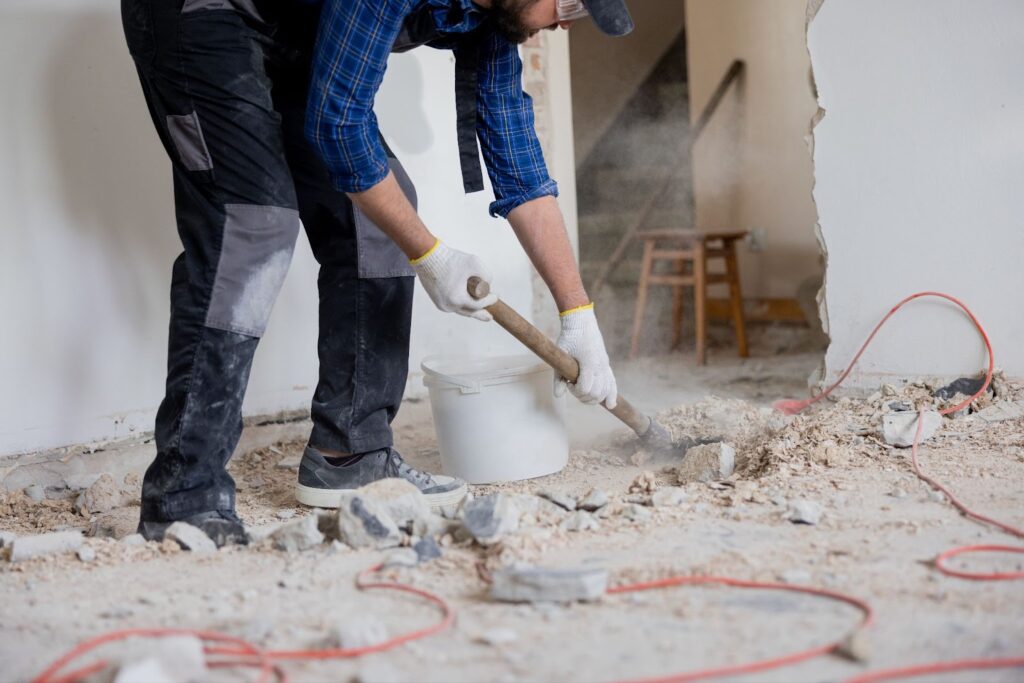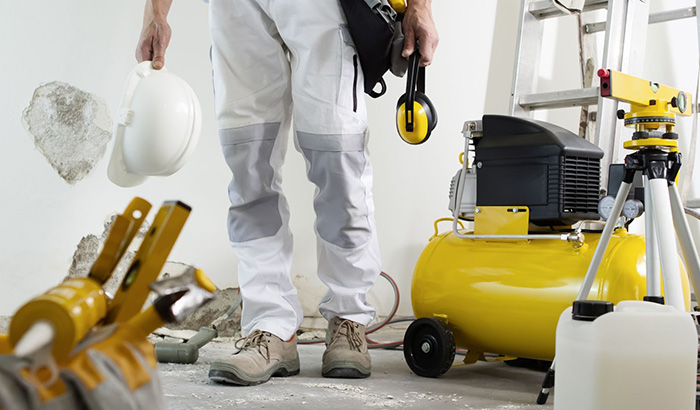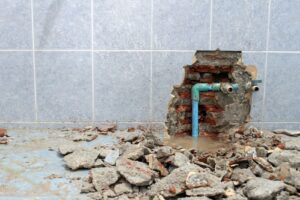On restoration sites, safety is paramount, whether you’re reviving flood-damaged homes or rehabilitating fire-stricken buildings. Each project has unique challenges and hazards, from structural instabilities and exposed wires to hazardous materials like asbestos and biological dangers like mold.
Recognizing and preparing for these risks ensures the protection of workers and the smooth completion of the project. Understanding potential dangers is crucial for a safety-first approach, allowing restoration professionals to protect their well-being and enhance project efficiency.
Planning and preparation
Before starting any restoration project, essential planning and preparation are paramount to ensuring site safety. Conducting a thorough risk assessment identifies potential hazards, from structural issues to hazardous materials, allowing teams to tailor safety measures specifically to their project’s needs.
Following this, creating a detailed safety plan, which includes the use of Personal Protective Equipment (PPE) and emergency response procedures, is vital. This plan ensures all team members are prepared for emergencies, aiming to minimize panic and confusion.
In terms of PPE, selecting the right gear tailored to the project’s specific risks and ensuring it fits properly are fundamental to protecting workers. This includes everything from waterproof boots for flood-damaged properties to respirators for projects involving hazardous particles.
Regularly maintaining and inspecting PPE are also necessary to maintain its effectiveness and extend its lifespan, reinforcing a culture of safety on the restoration site. Together, these proactive measures lay the groundwork for a successful project outcome and a commitment to the highest safety standards.
Training and awareness
It’s important to adapt to whatever risks are present in each project, highlighting the importance of worker training and awareness for a strong safety culture. Mandatory safety training provides all workers with essential knowledge of on-the-job site safety to ensure everyone can protect themselves and their peers.
Specialized training further prepares workers to safely handle specific challenges, from biohazard contamination to operating heavy machinery.
Continuous education through workshops, seminars, and courses helps keep pace with the evolving safety field, allowing workers to stay current with new safety practices and technologies.
Cultivating a culture of safety and learning enhances team well-being and project success. Comprehensive safety training and a commitment to ongoing education equip restoration teams to effectively navigate current dangers and future challenges.

On-site safety measures
Creating a safe restoration site requires preparation, training, and vigilant on-site safety measures. Regular inspections, clear signage, and proper tool and equipment use are pillars of a secure work environment, actively reducing risks and ensuring that every project progresses smoothly and safely.
Regular inspections
Conducting daily site inspections is a proactive approach to identifying and mitigating risks. These inspections, carried out by experienced personnel, serve to catch potential hazards before they result in accidents or injuries.
Whether it’s spotting a newly formed trip hazard, identifying an area of structural weakness, or noticing a piece of equipment in disrepair, these regular checks ensure that issues are addressed promptly. The goal is to maintain a continuously safe environment, adapting to the changing conditions and challenges that restoration work brings.
Clear signage
Using signs and barriers plays a crucial role in warning of dangers and directing traffic around the site. Clear, visible signage alerts workers and visitors alike to potential hazards, from overhead risks to areas where PPE is mandatory.
Meanwhile, barriers physically restrict access to dangerous zones, preventing unintentional entry into areas where specialized training or equipment is required for safety. Signs and barriers communicate vital information, guiding behavior on the site to prevent accidents.
Proper tool and equipment use
Each tool and piece of equipment comes with its own set of risks, and knowing how to use them safely prevents a wide range of injuries. This training should cover everything from the correct operation of power tools to the safe handling of heavy machinery.
In addition to training, regular maintenance and checks on equipment help keep the work environment safe. Well-maintained tools perform better and are less likely to malfunction, reducing the risk of accidents. These checks, whether performed daily or according to the manufacturer’s recommendations, ensure that equipment is in good working order and safe to use.
Environmental considerations
Restoration sites often encounter hazardous materials, whether it’s lead-based paint, asbestos, or chemical residues. Properly disposing of these materials is paramount, and strict regulatory guidelines must be followed.
This process begins with accurately identifying the hazardous substances present and then implementing safe removal practices. Workers involved in this aspect of the project require specialized training to handle and dispose of these materials safely, minimizing the risk of exposure.
Using designated containers and labeling them correctly ensures that hazardous waste is handled safely on-site and transported and disposed of in a manner that protects the environment.
Dust control is another essential component of environmental considerations on a restoration site. The demolition and construction activities typical of restoration projects generate significant amounts of dust, which may contain harmful particles.
Methods to minimize dust include using water sprays to dampen surfaces before work begins, employing dust extractors when drilling or cutting, and ensuring the site is well-ventilated.
Maintaining air quality goes hand in hand with dust control. This might involve using air filtration systems to capture airborne particles and conducting regular air quality assessments to ensure that levels of dust and contaminants are kept within safe limits.
These considerations are integral to the responsible management of restoration sites, reflecting a commitment to safety, health, and environmental stewardship.
Emergency preparedness
It’s important to be prepared for emergencies on any restoration site; this includes having emergency plans, emergency kits, and clear evacuation procedures.
Essential components include well-stocked first aid kits, strategically placed fire extinguishers, and accessible emergency exits, ensuring rapid response capabilities. Regular checks and drills enhance these measures, reinforcing the importance of clear, unobstructed paths for swift evacuation.
Familiarizing workers with multiple evacuation routes and conducting regular drills prepare everyone for safe exits during emergencies. This level of emergency preparedness is fundamental to maintaining a safe restoration site, embodying proactive safety and readiness to handle any situation effectively.

Ensure site safety with the help of Utah Disaster Clean Up
Partnering with Utah Disaster Clean Up means prioritizing safety and preparedness in restoration projects, where risks are inherent. Our commitment to safety, along with our extensive knowledge and experience, establishes us as leaders in disaster restoration.
Utah Disaster Clean Up sets safety standards high, focusing on environmental considerations, on-site safety, and emergency readiness. Choosing us ensures peace of mind, entrusting your project to a team that prioritizes safety for all involved and is equipped to meet any restoration challenge with continuous training and advanced safety equipment.
Contact Utah Disaster Clean Up or call 435-512-1584 for all your restoration needs.



